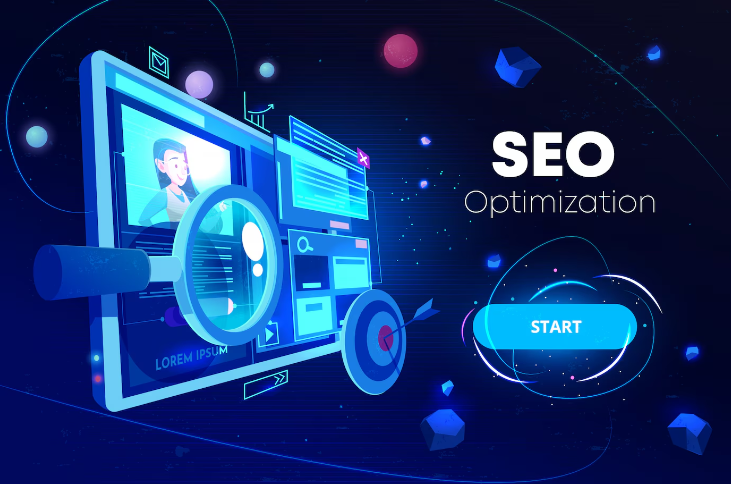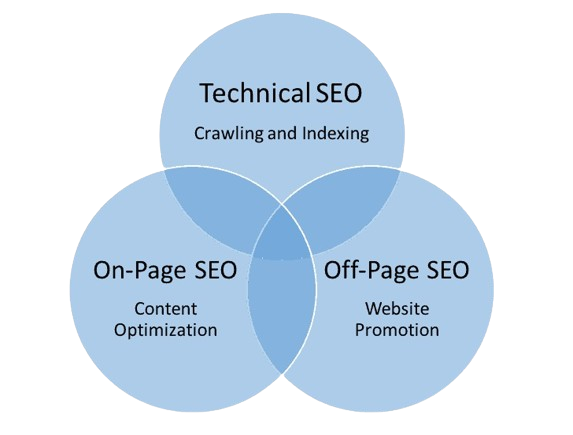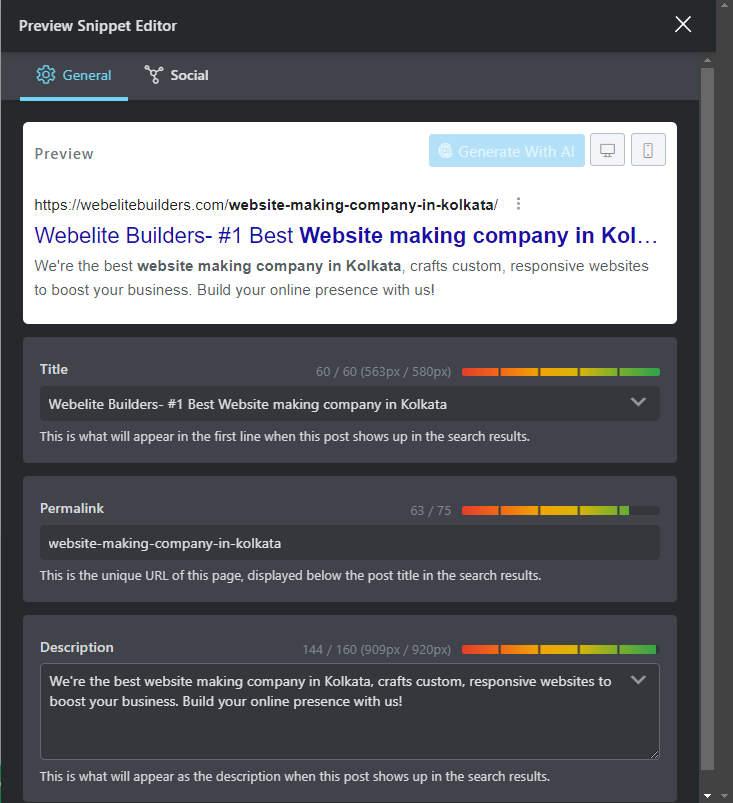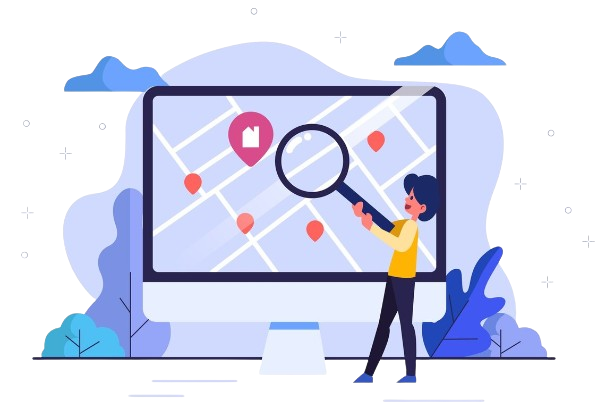Unlocking SEO Success: Your Ultimate Guide to Enhancing Online Visibility
In the modern digital landscape, establishing a robust online presence is essential for businesses of every scale. Whether you’re a startup, a small business, or a large corporation, Search Engine Optimization (SEO) plays a pivotal role in driving traffic to your website and enhancing your visibility on search engines. In this comprehensive guide, we’ll delve deep into the world of SEO, exploring its various components, strategies, and best practices to help you master the art of optimizing your website for search engines.

What is SEO?
Search Engine Optimization (SEO) is the process of optimizing your website to rank higher in search engine results pages (SERPs). It involves a combination of technical, on-page, and off-page strategies to improve your website’s visibility and drive organic (non-paid) traffic. SEO is a long-term strategy that focuses on improving the user experience and providing valuable content to your audience.
Why is SEO Important?
Enhanced Visibility: Achieving higher rankings on search engines results in greater visibility and heightened brand awareness.
Organic Traffic: SEO helps drive organic traffic, which is more sustainable and cost-effective compared to paid advertising.
Credibility and Trust: Higher-ranking websites are viewed as more credible and trust worthy by users.
User Experience: SEO improves the overall user experience by optimizing website speed, mobile-friendliness, and content quality.
Competitive Advantage: Effective SEO strategies can give you an edge over your competitors in search engine rankings.
Key Components of SEO
SEO is divided into three key areas: On-Page SEO, Off-Page SEO, and Technical SEO. Let’s examine each component closely.

1. On-Page SEO
On-Page SEO focuses on optimizing individual web pages to improve rankings and attract targeted traffic. It involves optimizing various elements within your website, including:
Title Tags: The title tag is an HTML element that specifies the title of a web page. It’s one of the most important on-page SEO factors. Ensure your title tags are unique, descriptive, and include relevant keywords.
Meta Descriptions: These are concise summaries of a web page’s content. While they don’t directly impact rankings, they influence click-through rates (CTR). Craft compelling meta descriptions that integrate your target keywords effectively.
Headings (H1, H2, H3, etc.): Utilize headings to organize your content and enhance readability. The H1 tag should contain your main keyword, while H2 and H3 tags should include related keywords.
Content Optimization: Creating high-quality, relevant content forms the foundation of effective on-page SEO. Conduct thorough keyword research to identify the terms your audience is searching for, integrating them naturally into your content. Aim for long-form content that provides comprehensive information.
Keyword Placement: Place your target keywords strategically within the first 100 words of your content, in headings, and throughout the body text.
Steer clear of keyword stuffing, as it can negatively impact your rankings.
Internal Linking: Improve navigation and distribute link equity by linking to other relevant pages within your website. Use clear and descriptive anchor text for internal links.
Image Optimization: Optimize images by using descriptive file names, alt text, and compressing them to reduce page load times.
URL Structure: Opt for clean, descriptive URLs that incorporate your target keywords. Avoid using overly complex URLs with unnecessary parameters.

2. Off-Page SEO
Off-Page SEO refers to actions taken outside your website to impact your rankings within SERPs. It primarily involves acquiring backlinks, which are links from other websites pointing to your site.
Key off-page SEO strategies include:
Backlink Building:
Backlink building is essential for SEO, involving the acquisition of hyperlinks from other websites to your own. High-quality backlinks boost your site’s authority, improve search engine rankings, and drive referral traffic.
Why Backlinks Matter:
- Improved Ranking: More high-quality backlinks generally lead to higher search engine rankings.
- Increased Traffic: Backlinks from reputable sites drive traffic to your site.
- Faster Indexing: Helps search engines discover and index your content quickly.
Using Ahrefs for Backlink Building:
- Site Explorer: Analyze competitors backlink profiles to find opportunities.
- Content Explorer: Discover popular content and link-building prospects.
- Backlink Checker: Get detailed analyses of backlink profiles to prioritize outreach.
- Alerts: Receive notifications of new or lost backlinks.
- Link Intersect: Find sites that link to competitors but not to you for new opportunities.
Implement these strategies with Ahrefs to build a strong backlink profile, boost your SEO, and drive more traffic to your website.

Social Media Marketing: While social signals don’t directly impact rankings, a strong social media presence can drive traffic to your website and increase brand awareness. Share your content on social media platforms and engage with your audience.
Online Reputation Management: Manage your online reputation by monitoring mentions of your brand and responding to reviews and comments. Positive reviews and mentions can enhance your credibility and attract more visitors.
Influencer Marketing: Collaborate with influencers in your industry to promote your content and gain exposure to a wider audience. Influencers can help you acquire high-quality backlinks and drive traffic to your website.
Content Marketing: Develop valuable and shareable content that naturally attracts backlinks. This may encompass blog posts, infographics, videos, and case studies.
3. Technical SEO
Technical SEO encompasses optimizing the technical aspects of your website to enhance its crawlability, indexability, and overall performance. Key technical SEO factors include:
Website Speed: Page load speed is a crucial ranking factor. Improve your website’s speed by compressing images, minimizing CSS and JavaScript files, and utilizing browser caching.
Mobile Optimization: Given the rise in mobile device usage, ensuring your website is mobile-friendly is crucial. Utilize responsive design to ensure optimal functionality across all devices.
XML Sitemaps: Generate and submit an XML sitemap to search engines for efficient crawling and indexing of your website.
Robots.txt: Employ the robots.txt file to manage search engine access to specific pages on your site.
SSL Certificate: Secure your website with an SSL certificate to ensure a secure connection between your server and users. HTTPS is a ranking factor and improves user trust.
Structured Data Markup: Implement structured data (schema markup) to help search engines understand the content of your pages better. This can enrich your search results with enhanced snippets.
Canonical Tags: Use canonical tags to avoid duplicate content issues by specifying the preferred version of a web page.
404 Errors: Monitor and fix 404 errors (broken links) to ensure a smooth user experience and maintain your website’s crawlability.

Advanced SEO Strategies
Once you have a solid understanding of the basics, you can explore advanced SEO strategies to further enhance your website’s visibility and performance.
1.Local SEO
Google My Business (GMB): Create and optimize your GMB profile with accurate business information, photos, and customer reviews.
Local Keywords: Include local keywords in your content, meta tags, and headings to target local searches effectively.
NAP Consistency: Ensure your business’s Name, Address, and Phone Number (NAP) are consistent across all online directories and platforms.
Local Citations: Build local citations by listing your business on relevant local directories and websites.

2.Voice Search Optimization
Conversational Keywords: Use natural, conversational keywords and phrases that people are likely to use in voice searches.
Featured Snippets: Aim to rank for featured snippets, as voice assistants often read these out as answers to voice queries.
Long-Tail Keywords: Target long-tail keywords, as voice searches tend to be longer and more specific.

3. User Experience (UX) Optimization
Easy Navigation: Ensure your website has a clear and intuitive navigation structure.
Responsive Design: Employ responsive design to ensure a flawless experience across all devices.
Engaging Content: Create interactive and valuable content that keeps users engaged and on your site longer.
Reduce Bounce Rate: Improve your content quality and page load times to reduce bounce rates.

Measuring SEO Success
To assess the impact of your SEO efforts, track key metrics including:
Organic Traffic: Monitor and analyze the volume of natural traffic flowing to your website from search engines.
Keyword Rankings: Keep tabs on how your target keywords rank in search engine results pages (SERPs).
Backlinks: Assess the quantity and quality of backlinks pointing to your site.
Conversion Rate: Measure how many visitors convert into customers or leads.
Bounce Rate: Assess the percentage of visitors who exit your site after viewing just one page.
Page Load Time: Monitor and optimize your website’s speed for better user experience and SEO performance.
Conclusion
Mastering SEO is a continual process that demands ongoing adaptation to search engine algorithms and user behaviors. Implementing the strategies and best practices outlined in this guide can boost your website’s visibility, attract more organic traffic, and help achieve your business goals. Remember, SEO is not just about ranking higher—it’s about delivering valuable content and optimizing user experience to build long-term success.
If you’re looking to implement these strategies for your website, consider partnering with experts. Contact Webelite Builders today to get started on your SEO journey and drive sustainable growth for your business in the competitive digital landscape.
Frequently Asked Questions (FAQs)
1. What is SEO?
SEO stands for Search Engine Optimization. It’s the practice of optimizing your website to improve its visibility in search engine results pages (SERPs), ultimately driving organic (non-paid) traffic to your site.
2. Why is SEO important for my business?
SEO is crucial because it helps your website rank higher in search engine results, making it more likely that users will find and visit your site. This increased visibility can result in higher traffic, increased conversions, and overall business expansion.
3. What are the key components of SEO?
SEO consists of three main components:
On-Page SEO: Optimizing individual web pages with content, keywords, and technical elements.
Off-Page SEO: Building authority and trust through backlinks and external signals.
Technical SEO: Enhancing website structure, speed, and crawlability for better search engine accessibility.
4. When will I start seeing the impact of SEO on my website?
The timeframe for SEO results varies based on factors like competition, website history, and the effectiveness of your SEO efforts. Generally, significant improvements can be seen within a few months, but it’s an ongoing process.
5. What are backlinks, and why are they important?
Backlinks are like referrals from other websites to yours, boosting your credibility and visibility online. They are crucial because they signal to search engines that your content is valuable and worthy of citation. Quality backlinks from authoritative sites can significantly impact your rankings.
6. How can I improve my website’s SEO?
Improving your website’s SEO involves:
Performing keyword research and strategically using relevant keywords.
Optimizing your website’s technical aspects like site speed, mobile-friendliness, and URL structure.
Producing high-quality, valuable content that attracts links and engages users.
Establishing relationships and earning backlinks from reputable websites.
7. What are meta tags, and how do they impact SEO?
Meta tags are HTML elements that offer metadata about a webpage. They include meta titles and meta descriptions, which can influence click-through rates from search engine results pages. Optimizing meta tags with relevant keywords can improve SEO performance.
8. How does mobile-friendliness affect SEO?
With the increase in mobile device usage, Google considers mobile-friendliness as a ranking factor. Websites that are mobile-friendly provide a better user experience, leading to higher rankings in mobile search results.
9. What tools can I use to track and improve SEO?
Popular SEO tools include Google Analytics for traffic analysis, Google Search Console for monitoring website performance in search results, SEMrush for keyword research and competitive analysis, and Moz for tracking rankings and site audits.
10. Is SEO a one-time effort, or does it require ongoing maintenance?
SEO is an ongoing process that requires regular monitoring, updates, and adjustments to keep up with search engine algorithm changes, competitors, and industry trends. Consistent effort is essential to maintain and improve rankings over time.


Pingback: SEO vs PPC : Which is Better for Your Business?